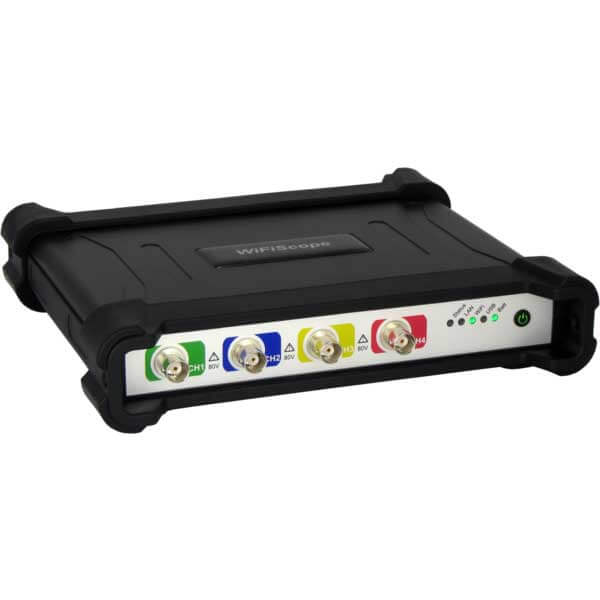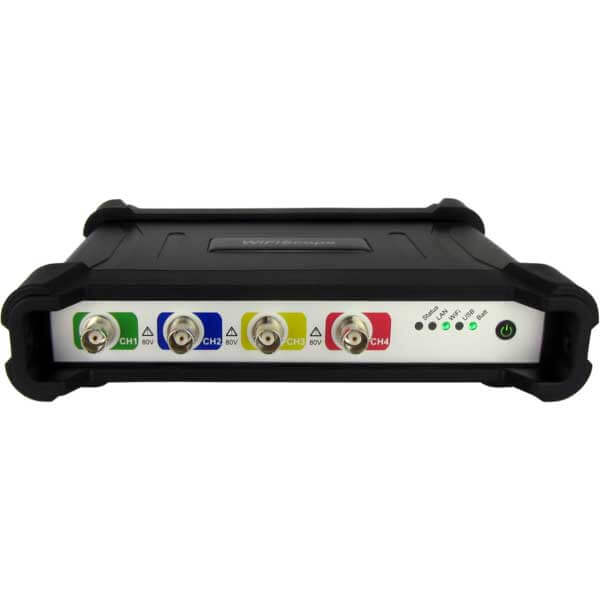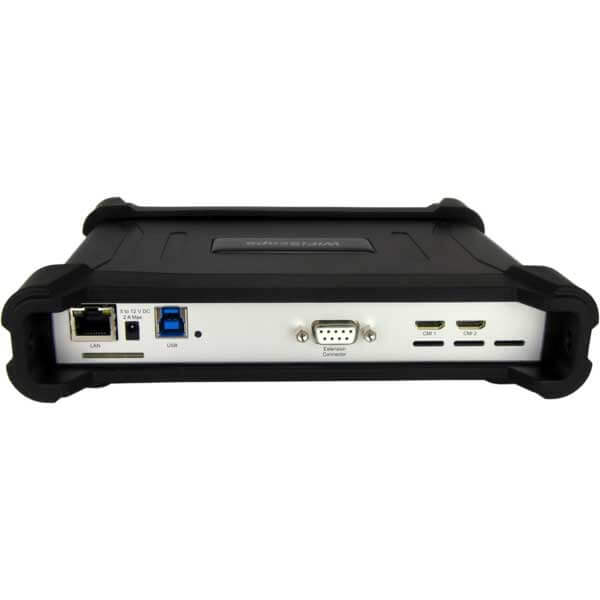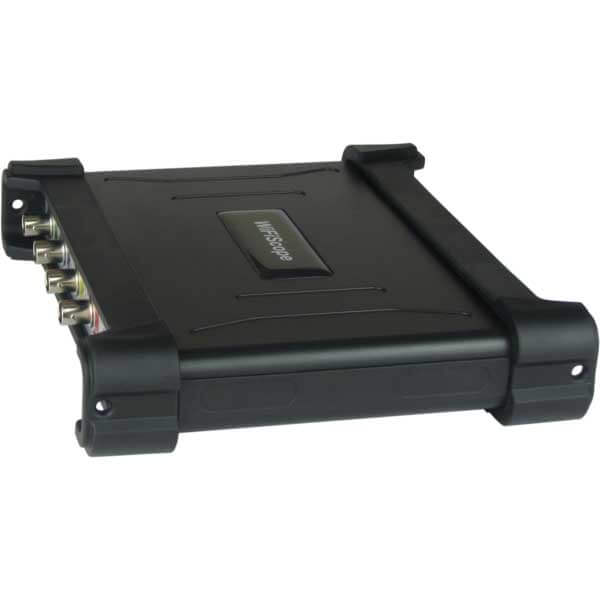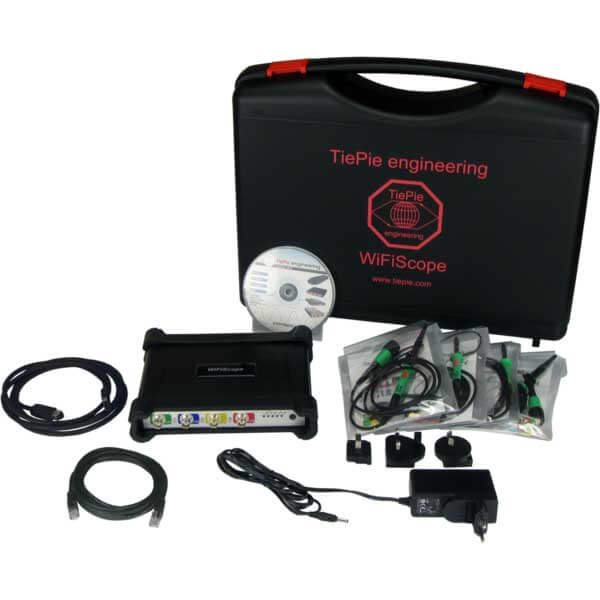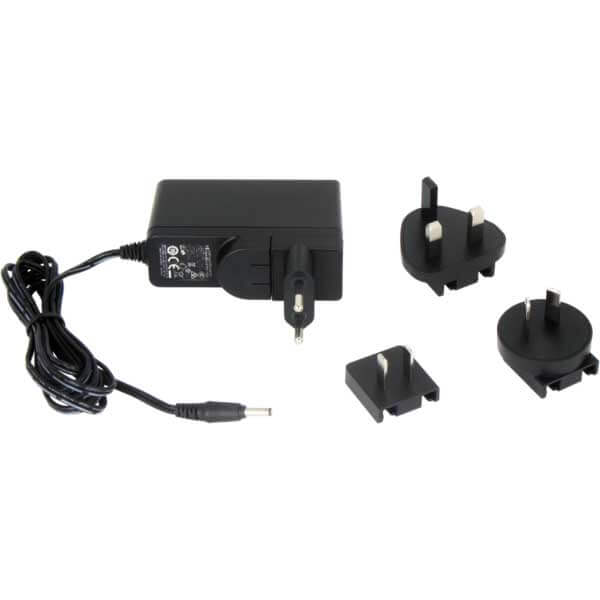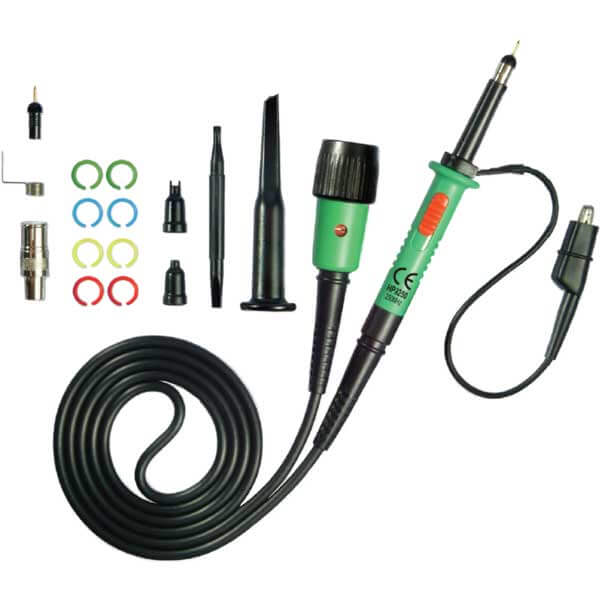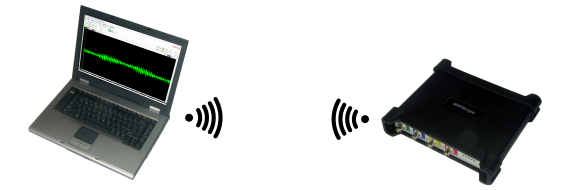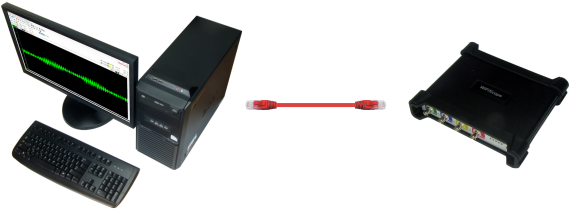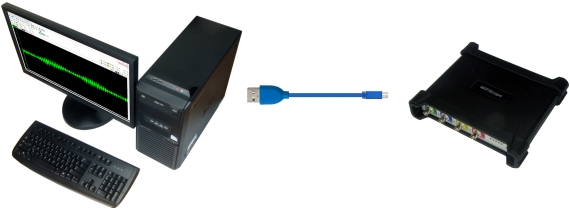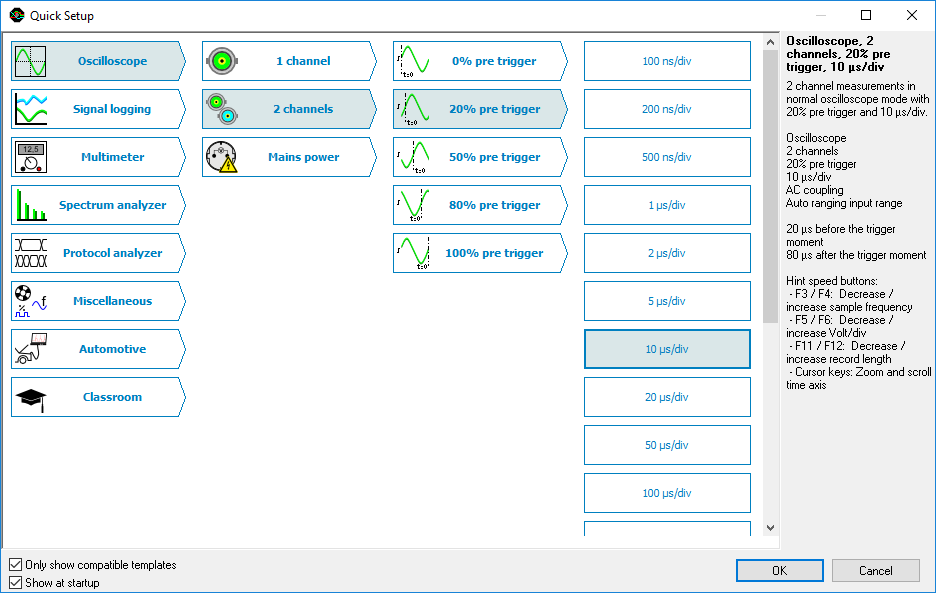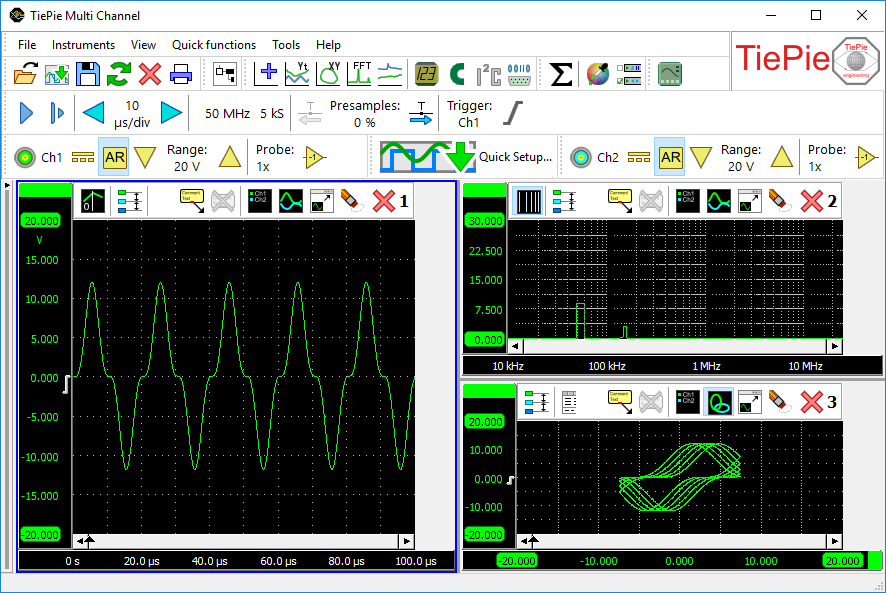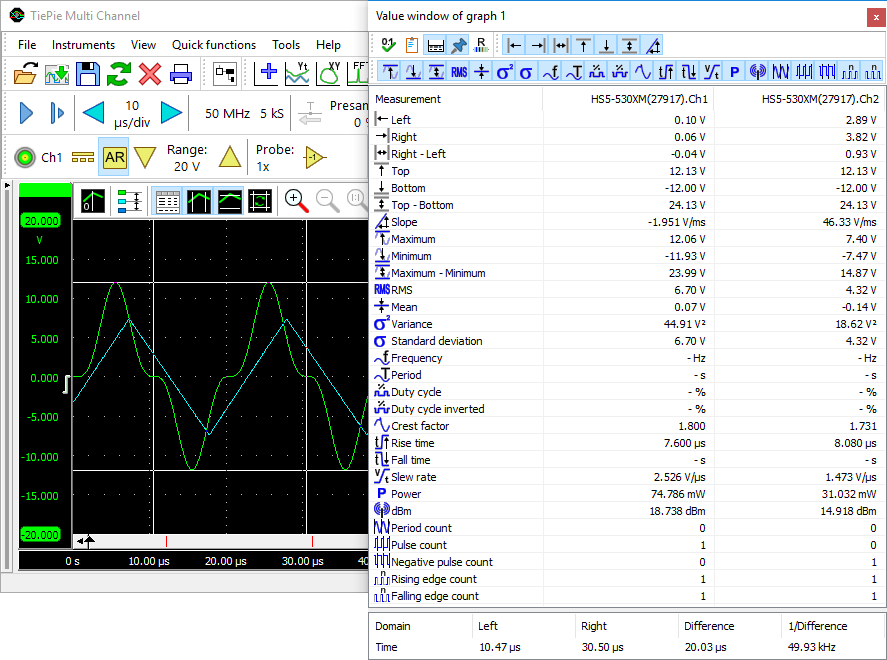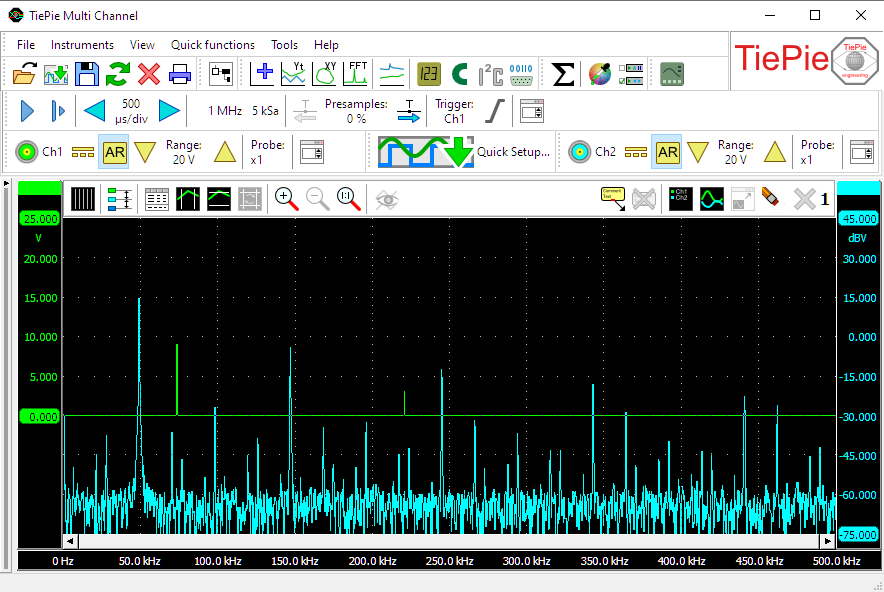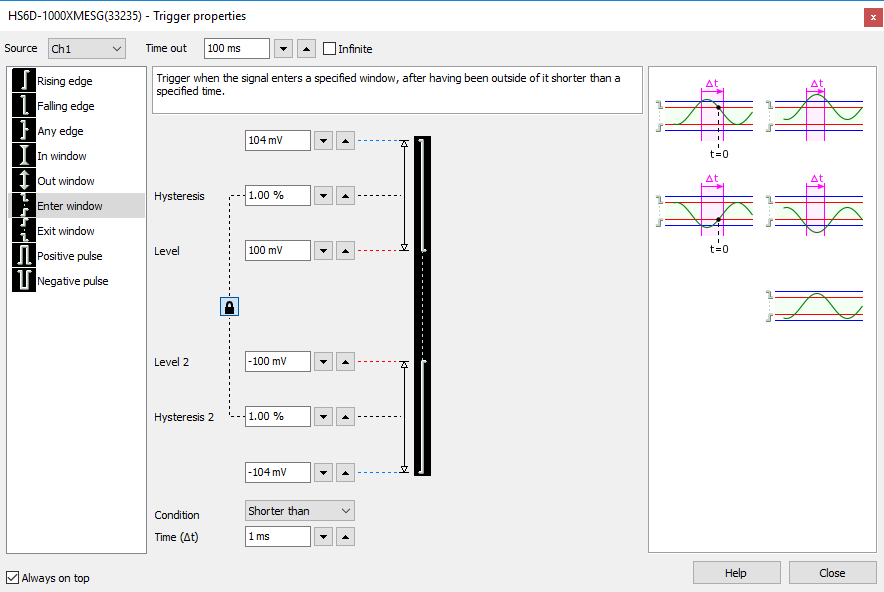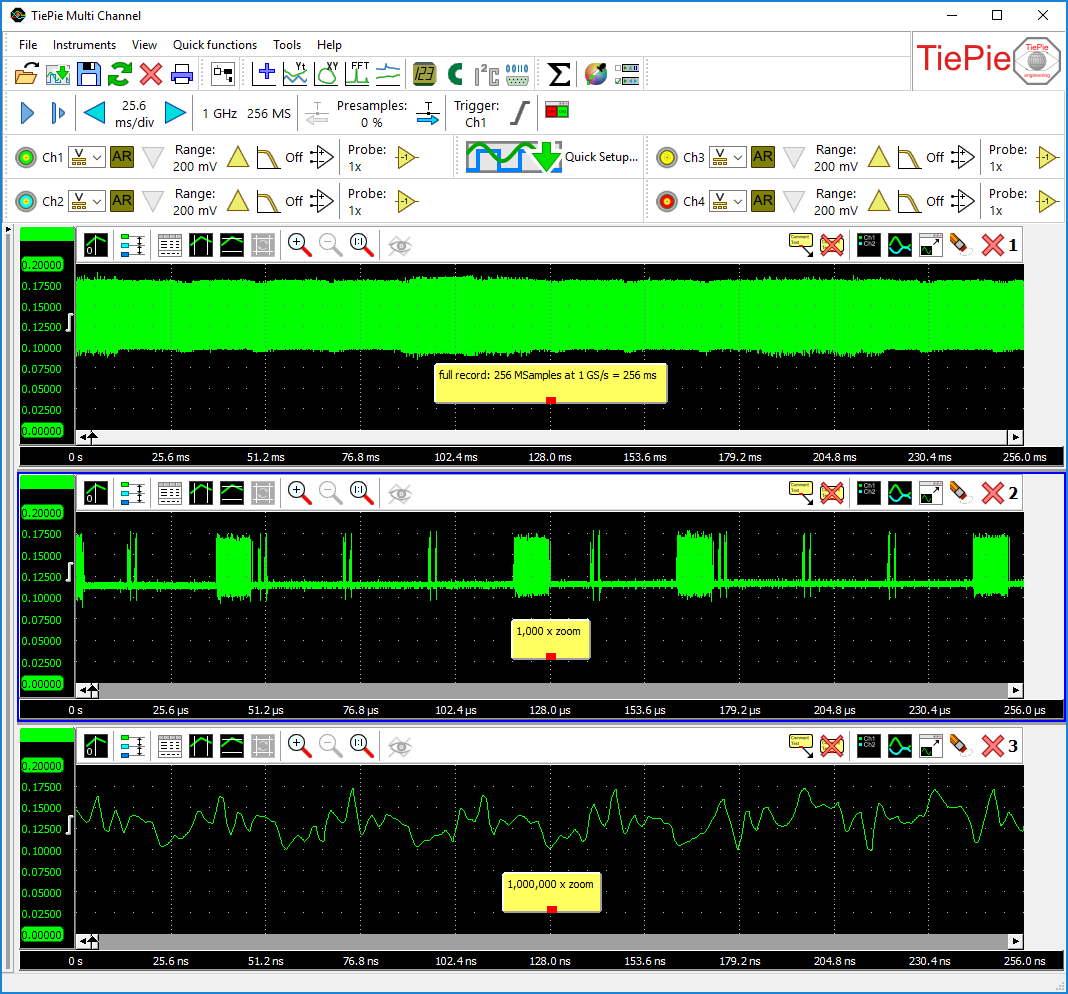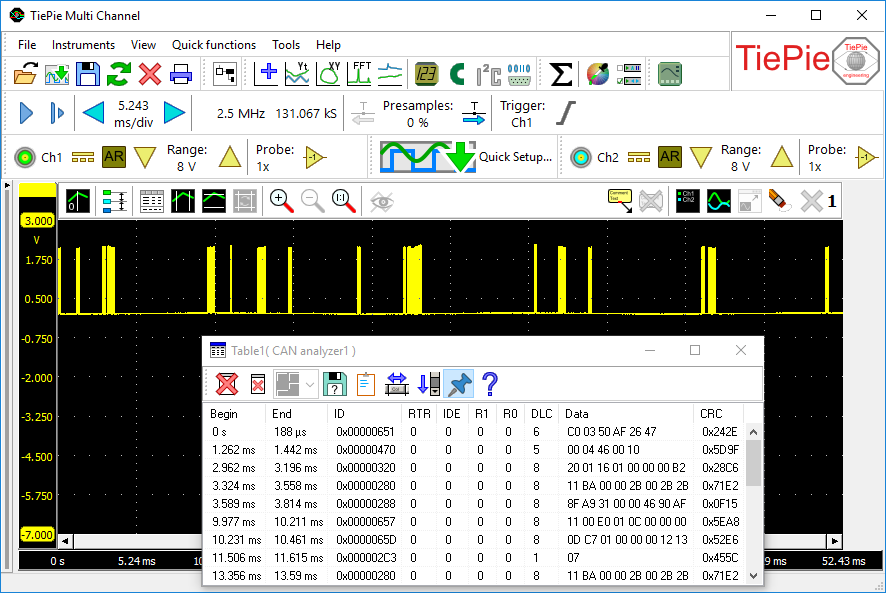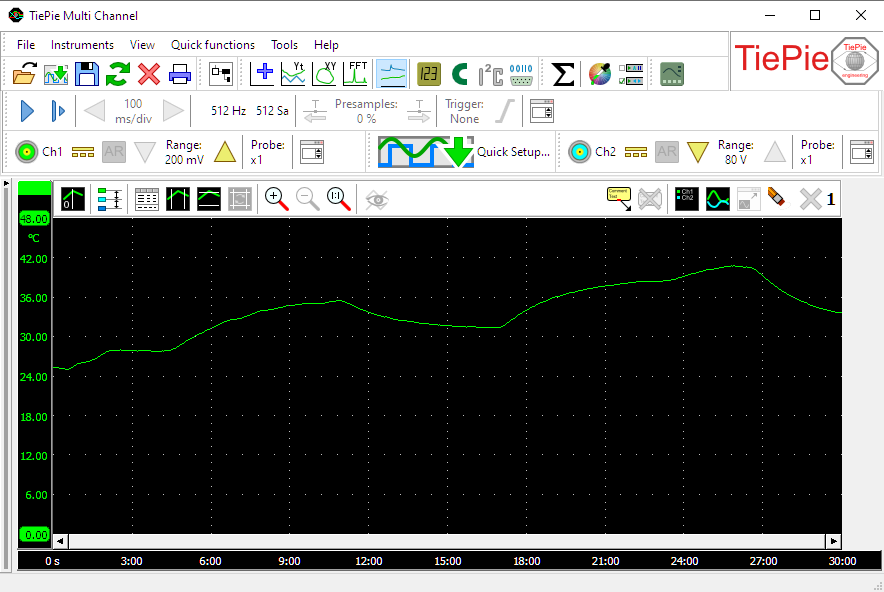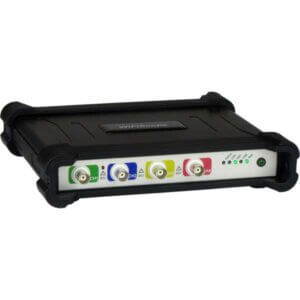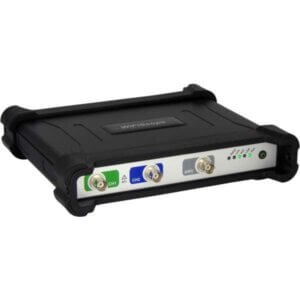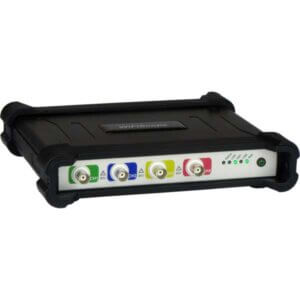Description
The WiFi oscilloscope packed with technology
The 1 GSa/s 14 bit quad channel High Resolution Oscilloscope.
Key specifications
- 8, 12, 14, 16 bit resolution, 0.25 % DC vertical accuracy, 0.1 % typical
- Up to 1 GSa/s sampling, up to 250 MHz bandwidth
- Up to 256 MSamples memory per channel
- Up to 200 MSs/s continuous streaming
- 1 ppm time base accuracy
This powerful high speed WiFi oscilloscope combines fast sampling up to 1 GSa/s with high resolutions of 12, 14 and 16 bit and a large memory of 64 MSamples on all four channels. The oscilloscope supports continuous streaming measurements up to 200 MSa/s and can be synchronized with other oscilloscopes using the CMI interface to form a multi channel combined instrument with synchronized time base. The CMI interface is available by default on the WiFiScope WS6. Optionally, the WiFiScope WS6 can be delivered with SureConnect connection test and resistance measurement on each channel.
The flexibility and quality that the WiFiScope WS6 offers is unparalleled by any other oscilloscope in its class.
Rugged industrial design
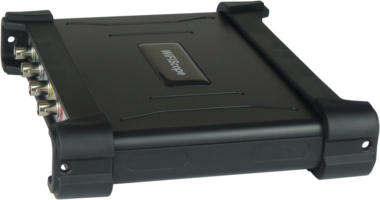
The WiFiScope WS6 features a rugged design. Its enclosure is fitted with rubber protectors at the front and the rear. These protect the scope against damage by mechanical shocks. The rubber helps absorbing shocks and protects the connectors at the front and the rear of the WiFiScope WS6, these fall within the protected zone.
Additionally, the rubber prevents your WiFiScope WS6 from sliding. The rubber protectors have special notches that simplify stacking instruments. Holes are included that allow to connect a strap to hang the instrument near the test subject.
SureConnect
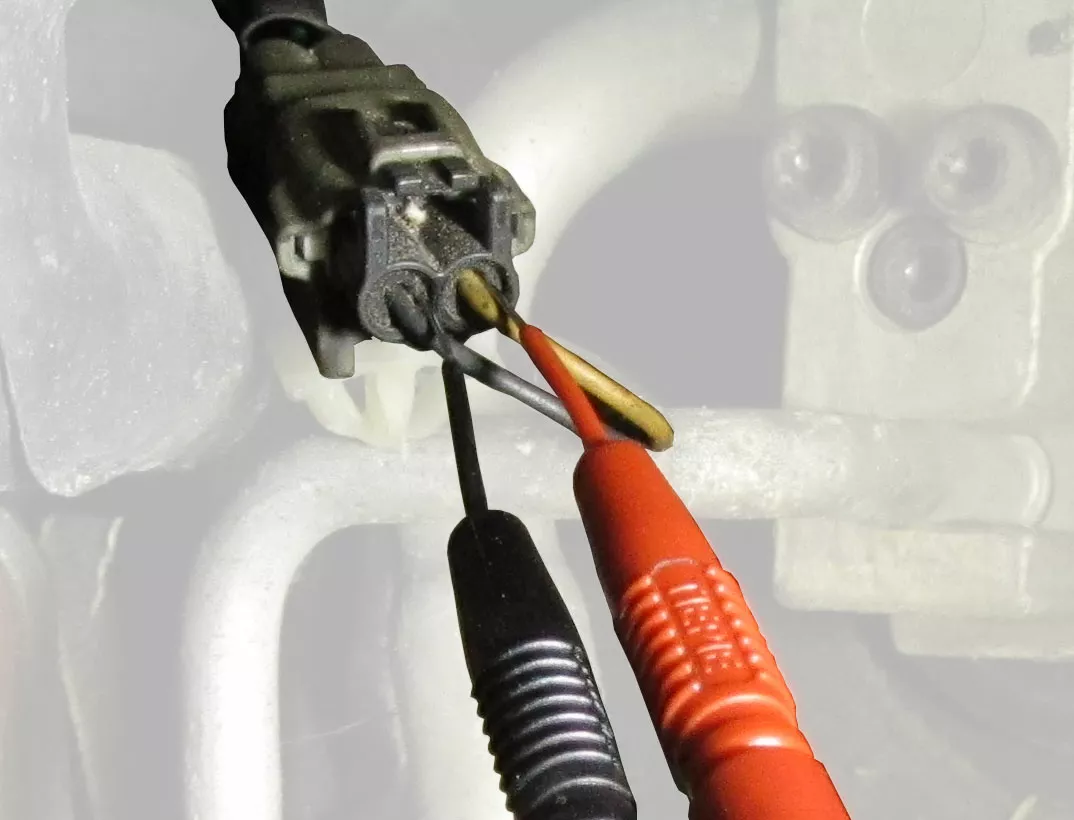
The SureConnect connection test feature of the WiFiScope WS6 tells you immediately whether your test probe or clip actually makes electrical contact or not. No more doubt whether your probe doesn’t make contact or there really is no signal.
EMI pre compliance testing
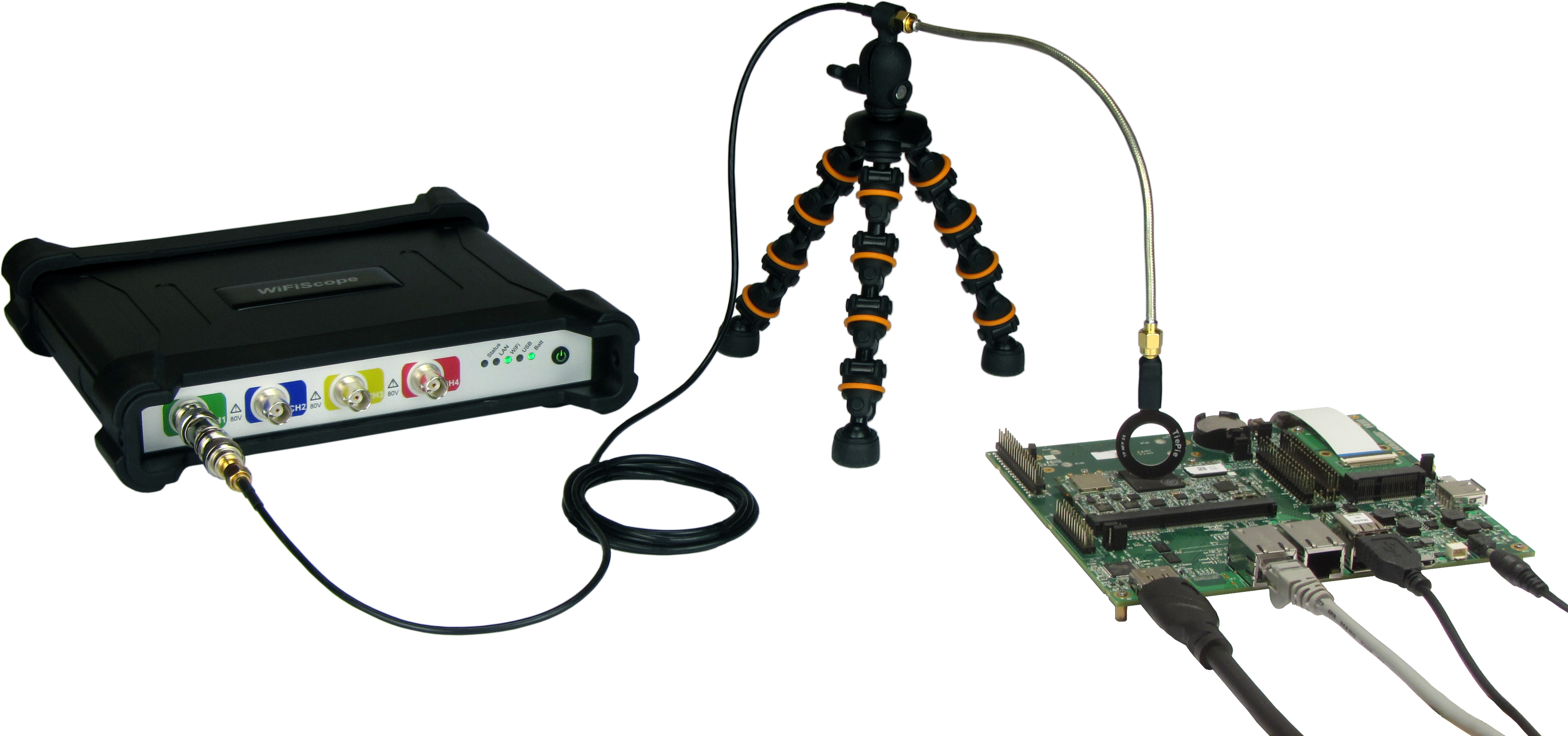
The powerful capabilities of the WiFiScope WS6 – 1000XMES EMI analyzer give the user the possibility to quickly perform a good EMI compliance test. With this cost effective test, time and money are saved by avoiding extra visits to expensive EMC testing facilities. The supplied EMI probe set TP-EMI-HS6 contains three magnetic field (H field) probes and one electric field (E field) probe. The tripod ensures that the probes can be positioned properly at the object under test.
Multi instrument synchronization
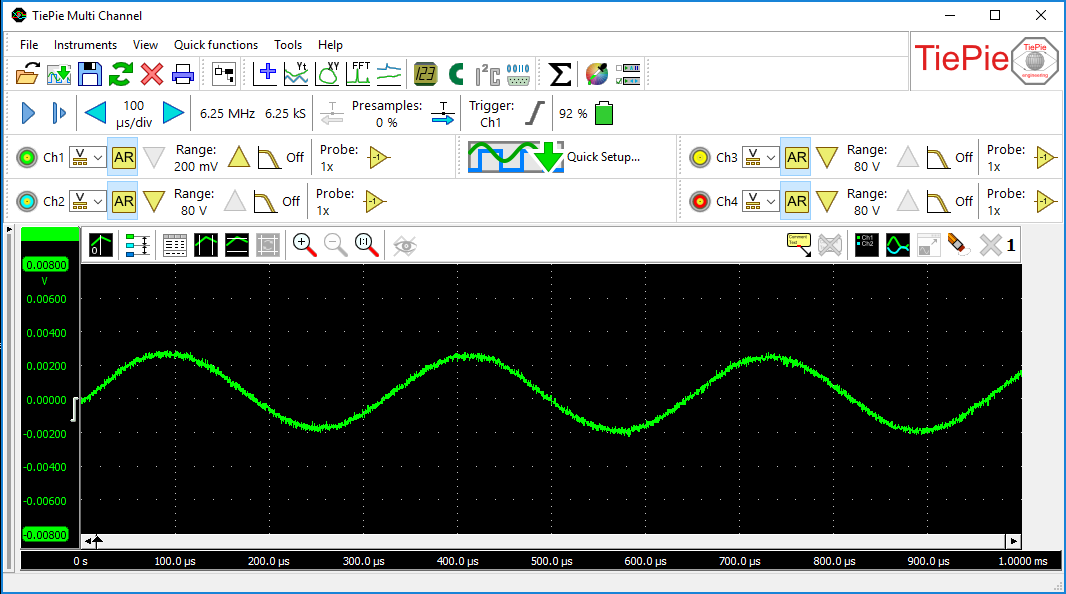
The WiFiScope WS6 is equipped with a sophisticated CMI synchronization bus, allowing to connect multiple WiFiScope WS6s to each other by means of TP-C50H Coupling cable CMIs, to use them as a combined and synchronized instrument. All instruments will measure at the same sample frequency (0 ppm deviation!). Apart from a synchronization bus, the CMI also contains a trigger bus and a detection bus. The maximum number of instruments is only limited by the number available USB ports.
When the instruments are located further apart, yet have to be combined and synchronized, the Wireless Multi Instrument Synchronization Module WCMI can be used. The WCMI modules are connected to the extension port of the instruments and allow to synchronize instruments that are up to 400 m apart.
High accuracy

The WiFiScope WS6 measures with high resolutions of 14 and 16 bit. A signal measured with the WiFiScope WS6 therefore has 256 times more resolution than most standalone oscilloscopes, which usually have a low resolution of 8 or 9 bit. The high resolution of the WiFiScope WS6 precision oscilloscope allows for measuring signals with more accuracy, because the quantization error is much lower.
Large memory
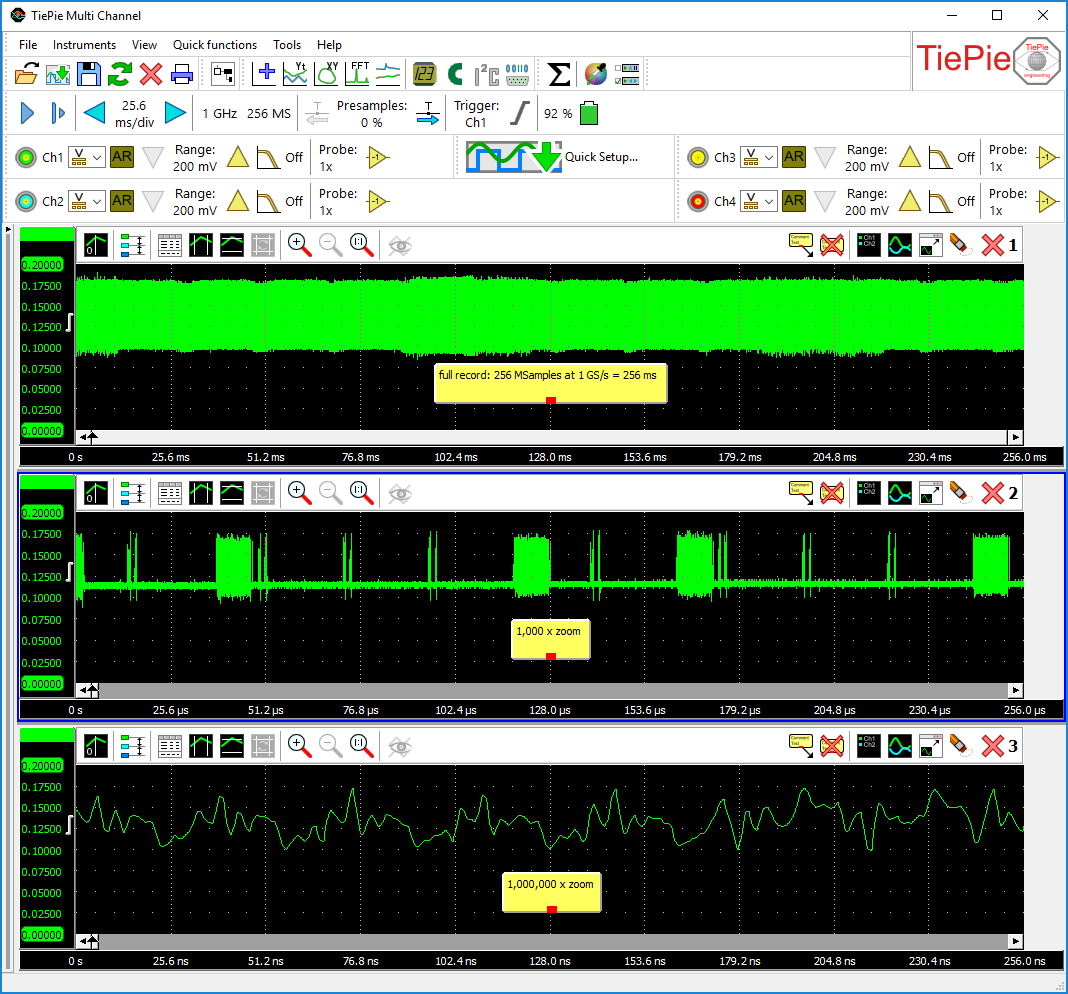
When measuring at high sample rates, a long record length/large memory is necessary to be able to record a complete signal in the acquisition buffer. Where most oscilloscopes have 2.5 k-Samples or 100 k-Samples memory, the WiFiScope WS6 has up to 256 MSamples memory per channel, depending on the selected resolution and the number of active channels. When measuring at 14 bit resolution and all four channels, the available memory is 32 MSamples per channel. This gives the user 300 to 100000 times more memory. An advantage of a large memory is that once-only fast phenomena can be captured accurately or complete serial communication signal blocks can be measured all at once. For example complete serial communications, like CAN bus signals, can be measured all in one record to be reviewed and analyzed afterwards.
Bandwidth limit
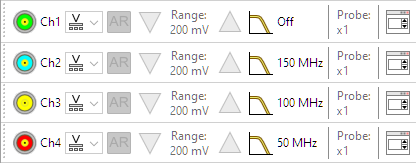
It seems reasonable to assume that more bandwidth is better, but a wider bandwidth gives more noise. To reduce your noise you can switch on a bandwidth limiter for each channel individually of the WiFiScope WS6.
